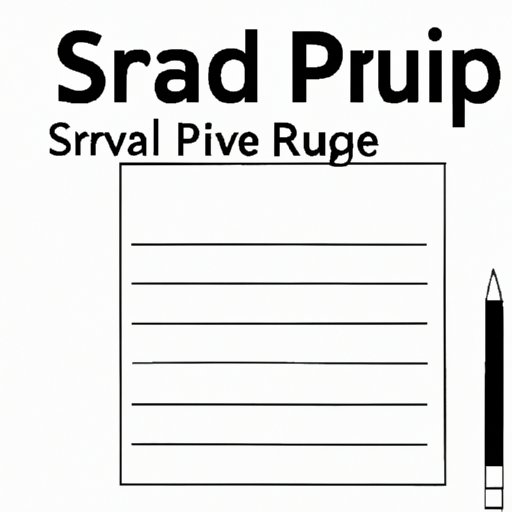Introduction
A writing sample is a piece of writing that showcases your writing skills, style and knowledge. It is generally used to demonstrate your ability to write effectively and succinctly, as well as to show your writing style. For this reason, it is important to make sure that your writing sample is well-written, organized, and engaging. This article will provide tips and techniques on how to create a successful writing sample.
Developing a Plan
The first step in creating a writing sample is to decide what you want to write about. Consider topics that are related to the field you are interested in, or topics that reflect your expertise. Make sure that the topic you choose is interesting and relevant. Once you have chosen a topic, you should consider the topics you want to cover. Think about the main points you want to discuss, as well as any subtopics or examples you might include.
Outlining Your Writing
Once you have decided on a topic and the points you want to make, it is time to create a structure for your writing. Outlining your writing can help ensure that your writing is clear and easy to follow. Use headings and subheadings to organize your content, and be sure to include transitions between sections. This will help make your writing sample more organized and cohesive.
Researching Your Topic
In order to make sure that your writing is accurate and up-to-date, it is important to do some research on the topic. Gather information from reliable sources such as books, articles, and websites. Additionally, look for relevant quotes and examples that you could use to illustrate your points. By incorporating research and examples into your writing, you can make your writing sample more engaging and convincing.
Drafting Your Writing Sample
Once you have gathered enough information and outlined your writing, you can start drafting your writing sample. When drafting, make sure to write in an effective manner. Incorporate the research and examples you have gathered, and make sure to explain your points clearly and concisely. As you write, keep in mind the audience you are writing for, and make sure to use language that they will understand.
Checking for Errors
When you have finished drafting your writing sample, it is important to check for any grammar, spelling, or punctuation errors. Make sure that your writing is clear and easy to read, and that there are no typos or mistakes. Additionally, look for any inconsistencies or inaccuracies in your writing, and correct them if necessary.
Revising and Editing
After you have checked for errors, it is time to revise and edit your writing sample. Take a look at the overall flow of your writing, and make sure that it is easy to read and understand. Ensure that your writing is concise and engaging, and that all your points are supported by evidence. Additionally, make sure that the transitions between sections are smooth and logical.
Proofreading
The final step in creating a successful writing sample is proofreading. Read through your writing sample one last time to make sure that it is free of any errors. Double check for any typos or mistakes, and make sure that your writing is polished and professional. This will help make sure that your writing sample is the best it can be.
Conclusion
Creating a successful writing sample requires careful planning, research, and editing. Start by deciding on a topic and outlining your writing. Then, do research to make sure your writing is accurate and up-to-date. Draft your writing, and check for errors before revising and editing. Finally, proofread your writing sample to make sure it is error-free. By following these steps, you can create an engaging and effective writing sample.
(Note: Is this article not meeting your expectations? Do you have knowledge or insights to share? Unlock new opportunities and expand your reach by joining our authors team. Click Registration to join us and share your expertise with our readers.)
